Ethnic Groups in Uganda | Cultural Safaris
Ethnic Groups in Uganda | Cultural Safaris : are indigenous groups in Uganda with different ways of life, beliefs and region. As a result of migration and intermarriage, most Ugandans have ancestors from a variety of Uganda’s 34 ethnic groups. About two-thirds speak Bantu languages and live in the south. These include; the Ganda with 18.0 percent, Nyankole 9.9 percent, Kiga 8.3 percent and Soga 8.2 percent.
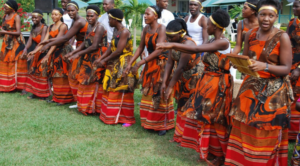 Furthermore, one-sixth of Uganda’s people are Western Nilotic speakers living in the north. These include; Langi with 5.9 percent as well as Acholi with 4.4 percent. Another one-sixth speak an Eastern Nilotic language and live in the northeast. These include; the Iteso with 6.0 percent and Karamojong with 2.1 percent. Finally, at the extreme northwest are speakers of Sudanic languages including the Lugbara 3.5 percent and the Madi 1.1 percent. Besides, English is the official language of Uganda, though Swahili is more widely spoken and used as a lingua franca. Luganda, the language of the Ganda, is the most frequently used indigenous tongue.
Furthermore, one-sixth of Uganda’s people are Western Nilotic speakers living in the north. These include; Langi with 5.9 percent as well as Acholi with 4.4 percent. Another one-sixth speak an Eastern Nilotic language and live in the northeast. These include; the Iteso with 6.0 percent and Karamojong with 2.1 percent. Finally, at the extreme northwest are speakers of Sudanic languages including the Lugbara 3.5 percent and the Madi 1.1 percent. Besides, English is the official language of Uganda, though Swahili is more widely spoken and used as a lingua franca. Luganda, the language of the Ganda, is the most frequently used indigenous tongue.
Common Ethnic Groups in Uganda
The Karamojong Culture
The name Karamojong basically means “the old tired men who stayed behind.” These are fierce warrior pastoralists found in the north eastern corner of Uganda bordering southern Sudan and Kenya. The Karamajongs in thier manyattas are located near Kidepo valley national park. Here, you will meet a proud and fierce group of semi nomadic pastoralists with a rich cultural heritage.
Origin of the Karamojongs
The Karamajong originated from the southerly migration by the Jie, an Abyssinian pastoralists 300-400 years ago. On reaching Kenyan-Ugandan-Sudanese boarder, the Jie split to create the Toposa of southern Sudan, Turkan of Kenya and Dodoth of northern Uganda. However, some of the Turkana Jie crossed the mountains. These line the present day boarder Kenyans to the plains of northeastern Uganda. On the other hand, some groups remained around Kotido as the Uganda Jie.
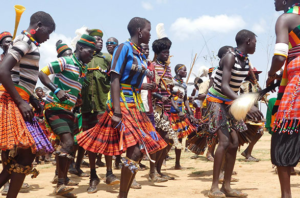 Meanwhile, others continued further until the aged parents among them became fed up with walking. Thus, the word ‘karamajong’ meaning the old men can walk no further or the old men sat down. Interestingly, the youth among them continued nomadic life style further southwards. Reportedly consisting of seven groups or clans who settled in today’s southern karamoja eventually merging to become the three clans now existing. These include Metheniko in the east around Moroto mountain, Pian in the south and Bokora in the west. However, a significant sized group went west and formed the Iteso, Kumam and Langi. In conclusion, it was this group who were said to have used the phrase “the old men can walk no further.
Meanwhile, others continued further until the aged parents among them became fed up with walking. Thus, the word ‘karamajong’ meaning the old men can walk no further or the old men sat down. Interestingly, the youth among them continued nomadic life style further southwards. Reportedly consisting of seven groups or clans who settled in today’s southern karamoja eventually merging to become the three clans now existing. These include Metheniko in the east around Moroto mountain, Pian in the south and Bokora in the west. However, a significant sized group went west and formed the Iteso, Kumam and Langi. In conclusion, it was this group who were said to have used the phrase “the old men can walk no further.
Karamojong facts
Religion
The Karamojong still follow their traditional religion and believe in a god Akuj unlike other tribes that have adopted Christianity. As a matter of fact, they consider cattle royalty and it is the measure of a man. A man is valued according to how many cattle he has and these people live for their cattle. They will do everything they possibly can to find good pasture and water for their cattle. However, this is a difficult task considering the fact that the Karamoja region very dry. These people also live in complete harmony with nature whereby they do not dress up much, they are usually half naked and decorated in tribal markings.
The Karamojong life style
Roles here are quite simply defined, men go out to find pasture and water for the cattle. Women stay back in the Manyatta to take care of the homestead while children tend the gardens. Life in Karamoja is communal whereby things are done together and for the good of the entire community. Here Men can take as many wives as they want as long as they have the dowry to pay for them. In fact, it is one of those societies where dowry is still taken very seriously.
The Manyattas
Visiting a Manyatta is a unique experience from the structure of the village, the homesteads, to the people and the language. Scarcely dressed children will greet you in a very welcoming manner as you enter the village. You will also see old men reclining on headrest stools wrapped in tunics. Here, you will also have an opportunity of sharing tales of old to the young. Through interaction, you will also know about the traditions and ways of these people.
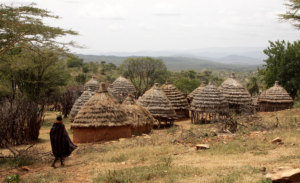 The interior of their homes is mostly smeared with dung and mud and they do not have beds and much furniture. Nevertheless, they are proud of the little they have and do not take it for granted. The Karamojong Manyattas are interesting to visit since they are one of a kind you will not find else in Uganda. However, a visit to the Manyattas is not complete without music and dance. You are free to as well join in and jump as high as you can to the music.
The interior of their homes is mostly smeared with dung and mud and they do not have beds and much furniture. Nevertheless, they are proud of the little they have and do not take it for granted. The Karamojong Manyattas are interesting to visit since they are one of a kind you will not find else in Uganda. However, a visit to the Manyattas is not complete without music and dance. You are free to as well join in and jump as high as you can to the music.
What to carry during your visit to the Karamojongs
Since it is scorching hot especially in the dry season, remember to carry a wide brimmed hat and sun glasses for protection. Jeans instead of shorts are also better not only because they are more culturally acceptable in the villages. Besides, you will also need the protection from the thorn bushes. Otherwise, you can plan this culture together with a visit to Kidepo valley national park.
The Sabiny’s (Sebei)
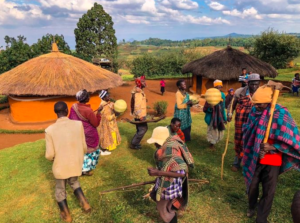 Sebei is basically an ethnic group in Uganda which speaks Sebei, a Nilotic language. Many members of this ethnic group occupy three districts of Kapchorwa, Kween and Bukwa found in Eastern Uganda. Their territory borders the Republic of Kenya which is a home to more than five million Kalenjin, a large ethnic group to which the Sebei belongs. They are mainly known as Sabiny, speak sabiny. It is a Kalenjin dialect spoken by other smaller groups of Kalenjin stock around Mount Elgon. The Sebei and these smaller groups inhabiting the hills of Mount Elgon collectively are referred to as the Saboat. However, the Sabiny like the rest of the Kalenjin, circumcise teenage boys and girls as a rite of passage.
Sebei is basically an ethnic group in Uganda which speaks Sebei, a Nilotic language. Many members of this ethnic group occupy three districts of Kapchorwa, Kween and Bukwa found in Eastern Uganda. Their territory borders the Republic of Kenya which is a home to more than five million Kalenjin, a large ethnic group to which the Sebei belongs. They are mainly known as Sabiny, speak sabiny. It is a Kalenjin dialect spoken by other smaller groups of Kalenjin stock around Mount Elgon. The Sebei and these smaller groups inhabiting the hills of Mount Elgon collectively are referred to as the Saboat. However, the Sabiny like the rest of the Kalenjin, circumcise teenage boys and girls as a rite of passage.
History of the Sebei or Sabiny people
Modern Sebei consists of three formerly independent but closely interrelated tribes. These live on the northern and northwestern slopes of Mount Elgon in eastern Uganda. The term Sebei has come into use in modern administrative parlance. As a result, the descendants of these three tribes now identify themselves as Sebei. In language and culture, the Sebei are closely affiliated to the people on the southern slopes of Elgon.
The Batwa people and their Culture
These are short indigenous people who were forest-dwelling hunter-gatherers. The live and practiced their cultural and economic way of life in the high mountainous forest areas. This was around Lake Kivu and Lake Edward in the Great Lakes region of Central Africa. These Batwa are widely accepted as the first inhabitants of the region who were later joined by farmers and pastoralists. Besides, they are found in Rwanda, Burundi, Uganda and eastern DRC.
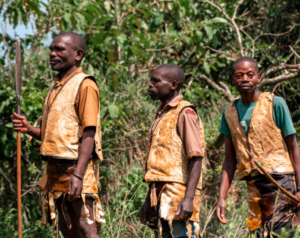 Their traditional forested territories were destroyed by agriculturalists and pastoralists or gazetted as nature conservation areas. As a result, they were forced to abandon their traditional lifestyle based on hunting and gathering. However some were able to develop new means of survival as potters. Others resorted to dancers and entertainers while others became dependent on occasional work and begging. Today, the Batwa live in small communities and they welcome travelers in their homes. Thereby sharing with them detailed information regarding their traditional forest life. Batwa are believed to have loved the forest like their lives. In fact, they knew well that God had blessed them with the forest as their own.
Their traditional forested territories were destroyed by agriculturalists and pastoralists or gazetted as nature conservation areas. As a result, they were forced to abandon their traditional lifestyle based on hunting and gathering. However some were able to develop new means of survival as potters. Others resorted to dancers and entertainers while others became dependent on occasional work and begging. Today, the Batwa live in small communities and they welcome travelers in their homes. Thereby sharing with them detailed information regarding their traditional forest life. Batwa are believed to have loved the forest like their lives. In fact, they knew well that God had blessed them with the forest as their own.
The Batwa Cultural Experience
The Batwa cultural experience was created by the displaced Batwa pygmies. This was basically to educate their children and to share their amazing heritage and traditions with the world. Therefore, a day spent with the Batwa gives you the opportunity to enjoy the following:
- Hike in the forest with the twa guide who will provide you with the chance to see the forest and its habitants through their eyes.
- Additionally, see how they lived and hunted in the traditional manner. Enjoy trying out your hunting techniques as they teach you how to shoot with a bow and arrow.
- Visit a traditional Batwa homestead and learn from the women how to prepare, cook and serve a meal.
- Furthermore, talk to a medicine man and learn about the medicinal properties of the forest flora.
- In addition, hear ancient legends and traditional songs.
Batwa trails in Bwindi are different from the Batwa trail in Mgahinga gorilla national park. However, they both experiences reward you with a memorable experience.
Why visit the Batwa communities?
Batwa pygmies have an interesting history of how they harmoniously lived together with wild animals in the forest. Besides they trying to adapt to a normal life after their eviction from the forest. Batwa have now started different coffee shops whereby travelers can enjoy coffee as they listen to stories. On the other hand, others make craft products such as baskets, hand bags, hats, mats, etc. Therefore, travelers are encouraged to buy these products as an indirect support to these less developed people. More so, an interaction with the Batwa is a great opportunity to understand in depth their co-existence with wild animals. In conclusion, be part of Batwa community trails in Bwindi, meet the indigenous forest people and enjoy a memorable time.
The Bamasaba/ Imbalu Culture
These Bamasaba ancestor, Maswahaba migrated from the Ethiopian Mountains traveling via Lake Turkana to Sironko. They later settled around Bududa where he fell in love with a Maasai girl who was known as Nabarwa. The family of Nabarwa demanded that in order for Maswahaba to marry their daughter he had to undergo their rite of circumcision which he agreed to.
Culture
Circumcision among the Bagisu occurs during the leap years and held every two years during August. Initially, the culture of circumcision was adopted by the Bamasaba from their in-laws the Maasai people. The men among the Bagisu tribe undergo initiation ceremonies known as (Imbalu) whereby the ritual is performed upon reaching puberty. However, those who abscond are hunted down and forcefully and scornfully circumcised.
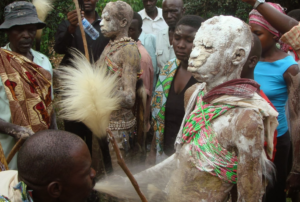 Before the day of circumcision, the initiates are tuned up by having them walk and dance. This is done around the villages for three days and here their heads are sprinkled with cassava flour. They are also painted with malwa-yeast past and their relatives dance with them. There is much drumming and singing as a sign of happiness in the culture. This is because it is believed that once a boy is circumcised he becomes a true Mugisu and mature person. Besides, the Bamasaaba ancestors survived on Bamboo shoots also known as malewa in the Lugisu language. These bamboo shoots are basically collected from bamboo trees on top of Mt. Elgon.
Before the day of circumcision, the initiates are tuned up by having them walk and dance. This is done around the villages for three days and here their heads are sprinkled with cassava flour. They are also painted with malwa-yeast past and their relatives dance with them. There is much drumming and singing as a sign of happiness in the culture. This is because it is believed that once a boy is circumcised he becomes a true Mugisu and mature person. Besides, the Bamasaaba ancestors survived on Bamboo shoots also known as malewa in the Lugisu language. These bamboo shoots are basically collected from bamboo trees on top of Mt. Elgon.
The Ik People and their Culture
The Ik tribe sometimes called Teso; is an indigenous community residing in Karamoja region, northeast of Uganda. It is also part of the cultural safaris to Kidepo National park. In the local language “Ik” loosely translates to ahead of migration or the first to migrate here. Actually, they migrated from Ethiopia, first settled in Kenya and later migrated to the Karamoja region. True to the meaning of their name, they were the first settlers in Karamoja region.
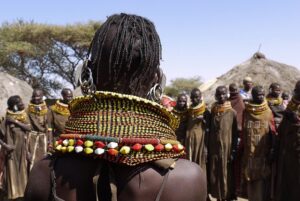 This was as a result of running away from their warrior neighbors. Compared to the Toposa, Turkana and Jie of the semi-arid East African region, the Ik community did not have a lot of wealth. However, they kept a few heads of cattle, goats, sheep as well as hens. They also possessed special skills at hunting wild game, gathering edible fruits, flowers, leaves, etc. Besides, they cultivated land to grow some food crops in the Karamoja plains. This Ik tribe inhabits the Morungole mountain ranges that rise to 2,750m from the Karamoja plains. The most exciting of all is interaction and sharing the life experiences with the Ik people.
This was as a result of running away from their warrior neighbors. Compared to the Toposa, Turkana and Jie of the semi-arid East African region, the Ik community did not have a lot of wealth. However, they kept a few heads of cattle, goats, sheep as well as hens. They also possessed special skills at hunting wild game, gathering edible fruits, flowers, leaves, etc. Besides, they cultivated land to grow some food crops in the Karamoja plains. This Ik tribe inhabits the Morungole mountain ranges that rise to 2,750m from the Karamoja plains. The most exciting of all is interaction and sharing the life experiences with the Ik people.
The Ik lifestyle
Marriage customs
The Ik communities gather in villages and the entire village, odok is fenced against foreign intruders and wild animals. On the other hand, the individual households, asak have a large yard that may consist of different things. These include; a food granary, rack for household utensils, kraal for goats and sheep and pit latrine. They are traditional polygamists and marry as many wives since they are able to pay dowry. Basically the community measures dowry in number of goats, sheep, chicken, beehives and monetary cash.
To the rest of the world these are so cheap items to talk of, but to the Ik they are very hard to get. Interestingly, the Ik husbands elect an asak for each wife and husbands make rotational visits in the same odok. The traditional Ik culture embraces wife inheritance after losing a partner or divorce. Sex promiscuity is highly punishable, incest is a taboo and adultery are punishable by death. Since youths have their own asak, it is possible to get partners and date in secrecy.
Child bearing
This is sign of blessings to humankind and to the Ik tribe raising children is a social responsibility. The parents share the asak with infants up to a certain age and then the grandparents pick them up. These grandparents are a living information data bank from which children acquire basic life survival skills. Later, at an average age of 13 years, the grandchildren leave their grandparents asak. Boys of the same age group elect their own asak and live as a gang while girls are “mature” ready for marriage. In conclusion a visit to these cultures will give you a true image of the Africa in its original sense.
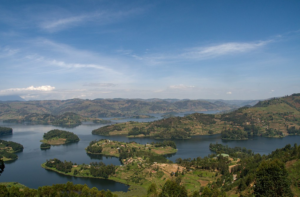 Ugandan shilling note under the title “Lake Bunyonyi and terraces”. Scientific literature generally quote a maximum depth of 40 m (130 ft). However, some tourist guides and locals insist that it is much deeper about 900 m (3,000 ft). Therefore, making it the second-deepest lake in Africa. Towns on its shores include Kyevu and Muko, while some of its 29 islands include Punishment Island and Bushara Island.
Ugandan shilling note under the title “Lake Bunyonyi and terraces”. Scientific literature generally quote a maximum depth of 40 m (130 ft). However, some tourist guides and locals insist that it is much deeper about 900 m (3,000 ft). Therefore, making it the second-deepest lake in Africa. Towns on its shores include Kyevu and Muko, while some of its 29 islands include Punishment Island and Bushara Island.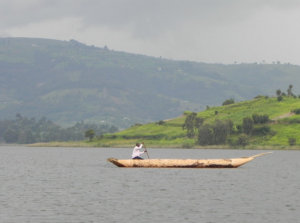 Translated as Punishment Island, was once the place where the Bakiga dumped unmarried pregnant women and left there to die. This was done as an intimidate to the rest, to show them not to do the same. Their only rescue from drowning or starvation was if a man who was too poor to pay a bride-price came over to claim the banished woman as his wife. There’s nothing to see here, with just one spindly tree in its centre.
Translated as Punishment Island, was once the place where the Bakiga dumped unmarried pregnant women and left there to die. This was done as an intimidate to the rest, to show them not to do the same. Their only rescue from drowning or starvation was if a man who was too poor to pay a bride-price came over to claim the banished woman as his wife. There’s nothing to see here, with just one spindly tree in its centre.
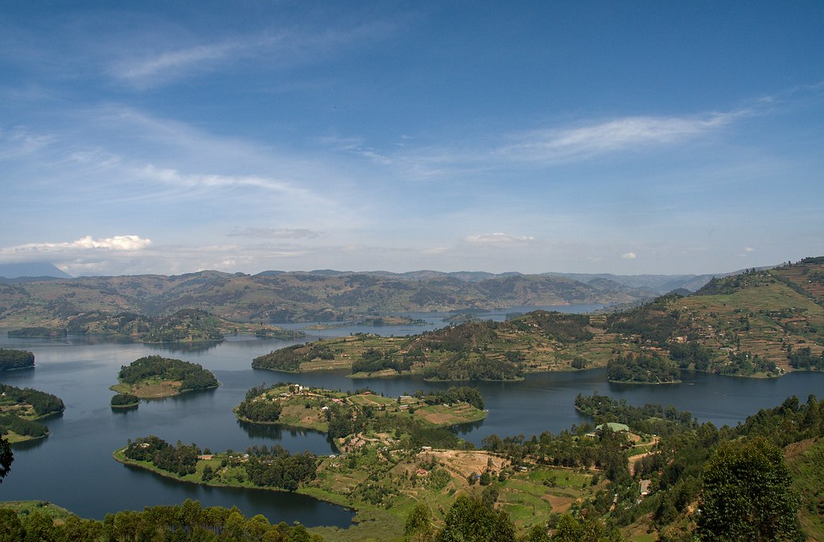
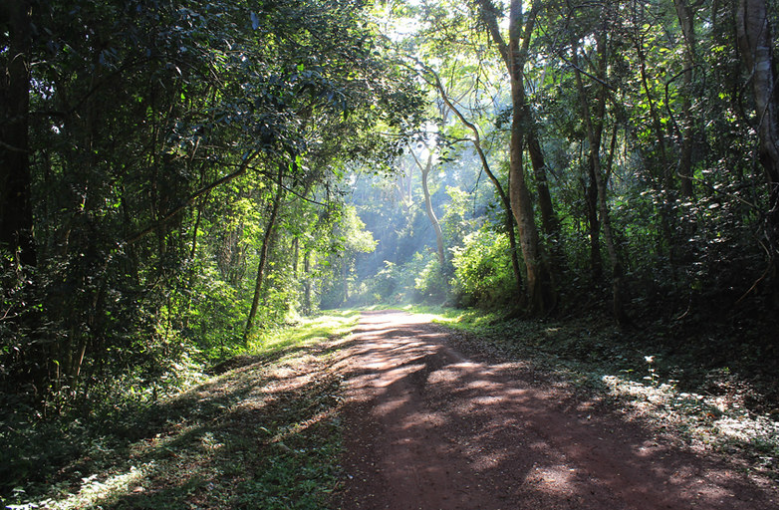
 This activity is only found in
This activity is only found in 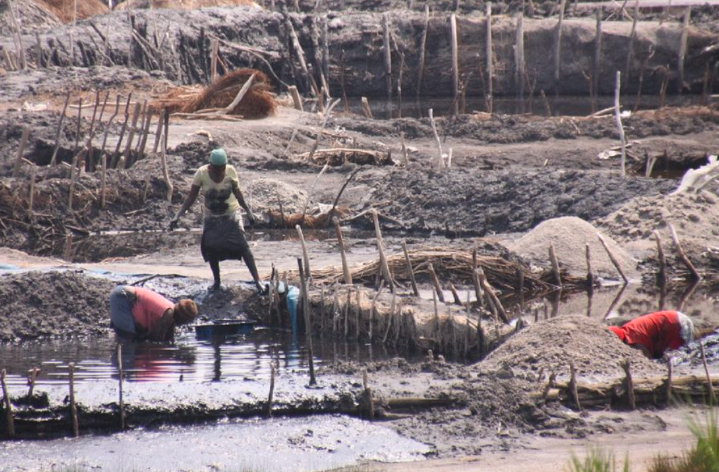
 Many of these craters have developed into salt water lakes since they are filled with water from different craters with no outlets.
Many of these craters have developed into salt water lakes since they are filled with water from different craters with no outlets. 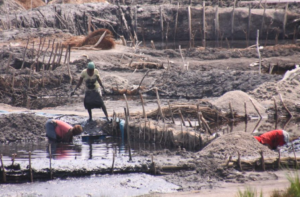 The females collect off the crusted salt formed on the surface which is normally filtered to make table salt. On the other hand, males scoop the salt blocks from the bottom of the lake which is usually at the shallow end of the lake. There are 3 types of salt extracted which include; highly crystalized salt which is best for human consumption. Unwashed salt which is used for tenderizing meat and beans locally during cooking and crude salt which is used as salt licks for cows.
The females collect off the crusted salt formed on the surface which is normally filtered to make table salt. On the other hand, males scoop the salt blocks from the bottom of the lake which is usually at the shallow end of the lake. There are 3 types of salt extracted which include; highly crystalized salt which is best for human consumption. Unwashed salt which is used for tenderizing meat and beans locally during cooking and crude salt which is used as salt licks for cows.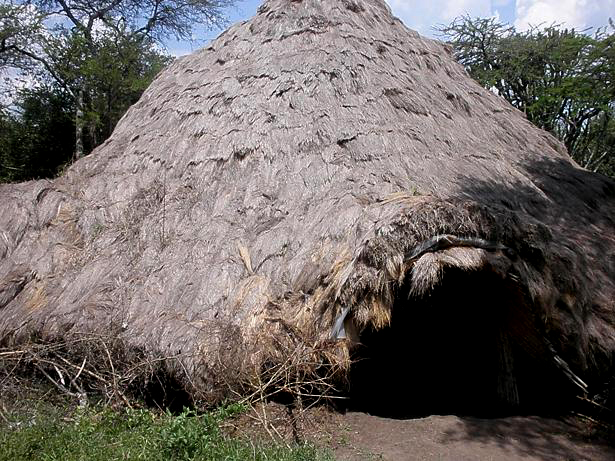
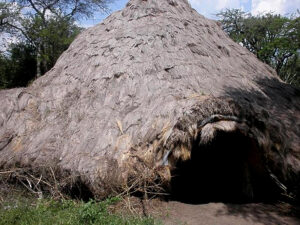 These are also considered as the first settlers in Uganda between the 11th and 16th centuries. The inner part of Bigo bya Mugyenyi is made up of 4 openings that pour into each other while the outer trails connects with Katonga River. According to stories from the locals and legends the historical site was dug out to shelter the Chwezi Empire. This was done to avoid incursions from other foreigners such as the Luo from South Sudan. The origin of these people is not known however, the historical site is preserved as one of the country’s culture treasures.
These are also considered as the first settlers in Uganda between the 11th and 16th centuries. The inner part of Bigo bya Mugyenyi is made up of 4 openings that pour into each other while the outer trails connects with Katonga River. According to stories from the locals and legends the historical site was dug out to shelter the Chwezi Empire. This was done to avoid incursions from other foreigners such as the Luo from South Sudan. The origin of these people is not known however, the historical site is preserved as one of the country’s culture treasures. 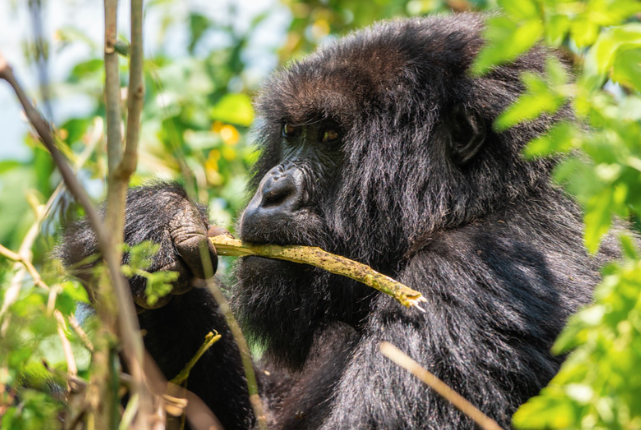
 For several years, Rwansigazi and Mwirima shared power after their father’s death. However, as time went on the two were so different that the group couldn’t continue.
For several years, Rwansigazi and Mwirima shared power after their father’s death. However, as time went on the two were so different that the group couldn’t continue. 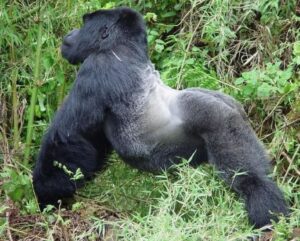 His interactions with other gorilla groups could result into fights that won him females to join and expand his family. In 2011, Mishaya was involved in a heated fight with an unhabituated gorilla family. As a result, this left him and a 2 year old infant with injuries all over the body. This was reported by the trackers as ‘severely injured’ and treated by veterinarians from the Mountain Gorilla Veterinary Project.
His interactions with other gorilla groups could result into fights that won him females to join and expand his family. In 2011, Mishaya was involved in a heated fight with an unhabituated gorilla family. As a result, this left him and a 2 year old infant with injuries all over the body. This was reported by the trackers as ‘severely injured’ and treated by veterinarians from the Mountain Gorilla Veterinary Project. 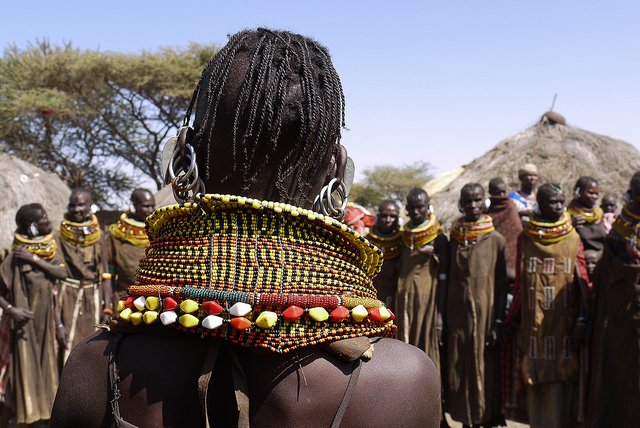
 Furthermore, one-sixth of Uganda’s people are Western Nilotic speakers living in the north. These include; Langi with 5.9 percent as well as Acholi with 4.4 percent. Another one-sixth speak an Eastern Nilotic language and live in the northeast. These include; the Iteso with 6.0 percent and Karamojong with 2.1 percent.
Furthermore, one-sixth of Uganda’s people are Western Nilotic speakers living in the north. These include; Langi with 5.9 percent as well as Acholi with 4.4 percent. Another one-sixth speak an Eastern Nilotic language and live in the northeast. These include; the Iteso with 6.0 percent and Karamojong with 2.1 percent.  Meanwhile, others continued further until the aged parents among them became fed up with walking. Thus, the word ‘karamajong’ meaning the old men can walk no further or the old men sat down. Interestingly, the youth among them continued nomadic life style further southwards. Reportedly consisting of seven groups or clans who settled in today’s southern karamoja eventually merging to become the three clans now existing. These include Metheniko in the east around Moroto mountain, Pian in the south and Bokora in the west. However, a significant sized group went west and formed the Iteso, Kumam and Langi. In conclusion, it was this group who were said to have used the phrase “the old men can walk no further.
Meanwhile, others continued further until the aged parents among them became fed up with walking. Thus, the word ‘karamajong’ meaning the old men can walk no further or the old men sat down. Interestingly, the youth among them continued nomadic life style further southwards. Reportedly consisting of seven groups or clans who settled in today’s southern karamoja eventually merging to become the three clans now existing. These include Metheniko in the east around Moroto mountain, Pian in the south and Bokora in the west. However, a significant sized group went west and formed the Iteso, Kumam and Langi. In conclusion, it was this group who were said to have used the phrase “the old men can walk no further. The interior of their homes is mostly smeared with dung and mud and they do not have beds and much furniture. Nevertheless, they are proud of the little they have and do not take it for granted. The Karamojong Manyattas are interesting to visit since they are one of a kind you will not find else in
The interior of their homes is mostly smeared with dung and mud and they do not have beds and much furniture. Nevertheless, they are proud of the little they have and do not take it for granted. The Karamojong Manyattas are interesting to visit since they are one of a kind you will not find else in  Sebei is basically an ethnic group in
Sebei is basically an ethnic group in  Their traditional forested territories were destroyed by agriculturalists and pastoralists or gazetted as nature conservation areas. As a result, they were forced to abandon their traditional lifestyle based on hunting and gathering. However some were able to develop new means of survival as potters. Others resorted to dancers and entertainers while others became dependent on occasional work and begging.
Their traditional forested territories were destroyed by agriculturalists and pastoralists or gazetted as nature conservation areas. As a result, they were forced to abandon their traditional lifestyle based on hunting and gathering. However some were able to develop new means of survival as potters. Others resorted to dancers and entertainers while others became dependent on occasional work and begging.  Before the day of circumcision, the initiates are tuned up by having them walk and dance. This is done around the villages for three days and here their heads are sprinkled with cassava flour. They are also painted with malwa-yeast past and their relatives dance with them. There is much drumming and singing as a sign of happiness in the culture. This is because it is believed that once a boy is circumcised he becomes a true Mugisu and mature person. Besides, the
Before the day of circumcision, the initiates are tuned up by having them walk and dance. This is done around the villages for three days and here their heads are sprinkled with cassava flour. They are also painted with malwa-yeast past and their relatives dance with them. There is much drumming and singing as a sign of happiness in the culture. This is because it is believed that once a boy is circumcised he becomes a true Mugisu and mature person. Besides, the This was as a result of running away from their warrior neighbors. Compared to the Toposa, Turkana and Jie of the semi-arid East African region, the Ik community did not have a lot of wealth. However, they kept a few heads of cattle, goats, sheep as well as hens. They also possessed special skills at hunting wild game, gathering edible fruits, flowers, leaves, etc. Besides, they cultivated land to grow some food crops in the Karamoja plains.
This was as a result of running away from their warrior neighbors. Compared to the Toposa, Turkana and Jie of the semi-arid East African region, the Ik community did not have a lot of wealth. However, they kept a few heads of cattle, goats, sheep as well as hens. They also possessed special skills at hunting wild game, gathering edible fruits, flowers, leaves, etc. Besides, they cultivated land to grow some food crops in the Karamoja plains. 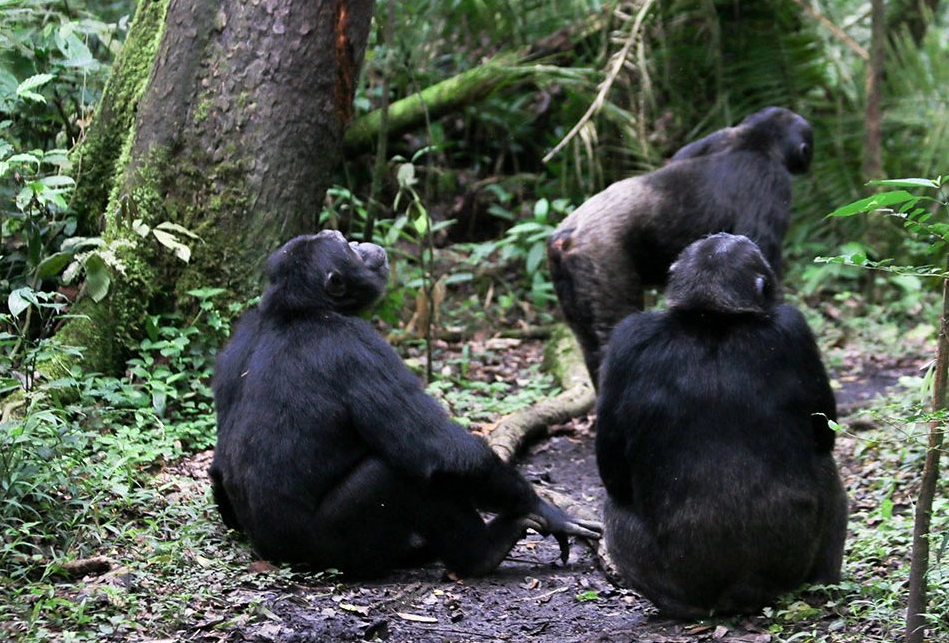
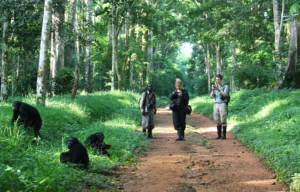 This activity generally allows you to step into the jungle in search of these great apes. During this activity, you are given a maximum of one hour in their presence standing from a safe distance of 7m. While here, you are allowed to enjoy their daily activities as well as take photos and videos for remembrance. Besides chimpanzee trekking, we have also got chimpanzee habituation that can be enjoyed while in
This activity generally allows you to step into the jungle in search of these great apes. During this activity, you are given a maximum of one hour in their presence standing from a safe distance of 7m. While here, you are allowed to enjoy their daily activities as well as take photos and videos for remembrance. Besides chimpanzee trekking, we have also got chimpanzee habituation that can be enjoyed while in  Interestingly, their first 30 days, infants cling to their mother’s bellies. Mothers provide their young with food, warmth, protection and teach them certain skills.
Interestingly, their first 30 days, infants cling to their mother’s bellies. Mothers provide their young with food, warmth, protection and teach them certain skills. 




